When you’re knitting a triangle shawl from the top down, the instructions for the cast on may look quite confusing when you have not come across them before. But the so-called garter tab is not really hard to do – I promise – and it is the best way to cast on for this type of shawl.
Wenn Du ein Dreieckstuch von oben strickst, findest Du die Anleitung für den Maschenanschlag vielleicht ziemlich verwirrend, wenn sie Dir vorher noch nie begegnet ist. Aber das sogenannte Garter Tab ist nicht schwierig – versprochen – und es ist der beste Maschenanschlag für diese Art von Tuch.
Let’s take a look at what happens if you don’t use the garter tab cast on and just cast on the number of stitches you need – that sounds so much easier, doesn’t it?
As you are the boss of your knitting, you can totally do this. Just be aware of the look it gets you. There seems to be a little bit of knitting missing from the beginning of a shawl.
Schauen wir mal, was passiert, wenn Du kein Garter Tab machst und einfach die benötigte Maschenzahl anschlägst – das klingt so viel einfacher, oder?
Du bist der Boss von Deinem Strickzeug, also kannst Du das selbstverständlich so machen. Du solltest nur wissen, was dann passiert. Es scheint, als würde ein kleines Stück in Deinem Tuch fehlen.
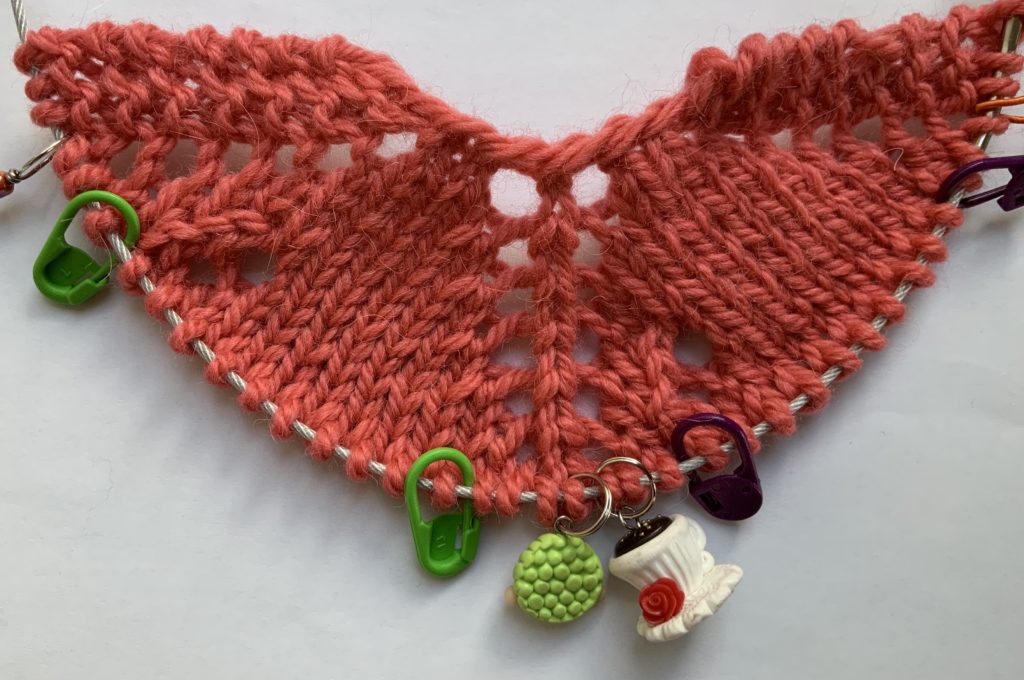
If that is not the look you are going for, the garter tab is here to solve this. Let’s go through it step by step and you will never be confused by the garter tab again!
If you prefer a video tutorial, I have one available for you on my youtube channel!
Wenn das nicht der Look ist, den Du möchtest, ist das Garter Tab die Lösung des Problems. Ich zeige es Dir Schritt für Schritt und es wird Dich nie wieder verwirren!
Wenn Du lieber ein Videotutorial hast, gibt es eins auf meinem Youtubekanal!
First, cast on a small number of stitches (most often three, because most shawls have a 3 stitch garter edge on both sides). You can cast on these stitches provisionally, but I must admit that I most often don’t bother with that and just use regular old longtail cast on.
Zuerst schlagen wir eine kleine Anzahl Maschen an (meist sind es drei, weil die meisten Tücher drei Randmaschen auf jeder Seite haben). Du kannst diese Maschen provisorisch anschlagen, aber ich benutze meist einfach den guten, alten Kreuzanschlag.
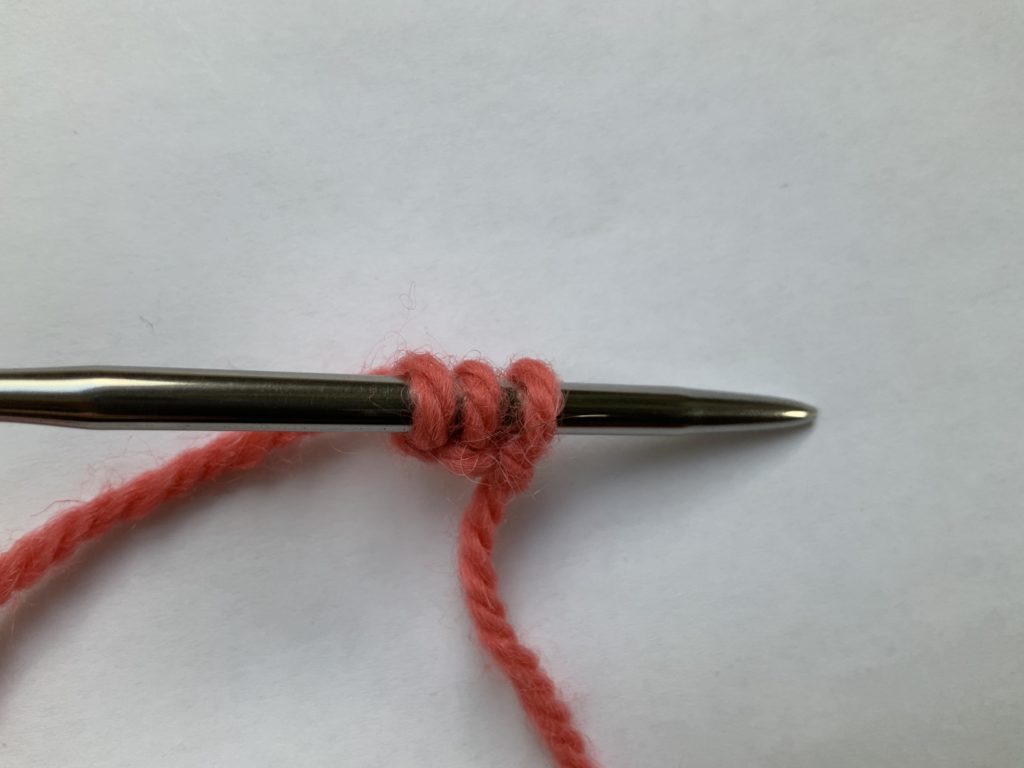
Next, we’ll knit a few rows over these stitches, so we get a little rectangular stripe. The smallest scarf in the world!
Anschliessend stricken wir ein paar Reihen über diese Maschen, so dass wir einen kleinen, rechteckigen Streifen kriegen. Der kleinste Schal der Welt!
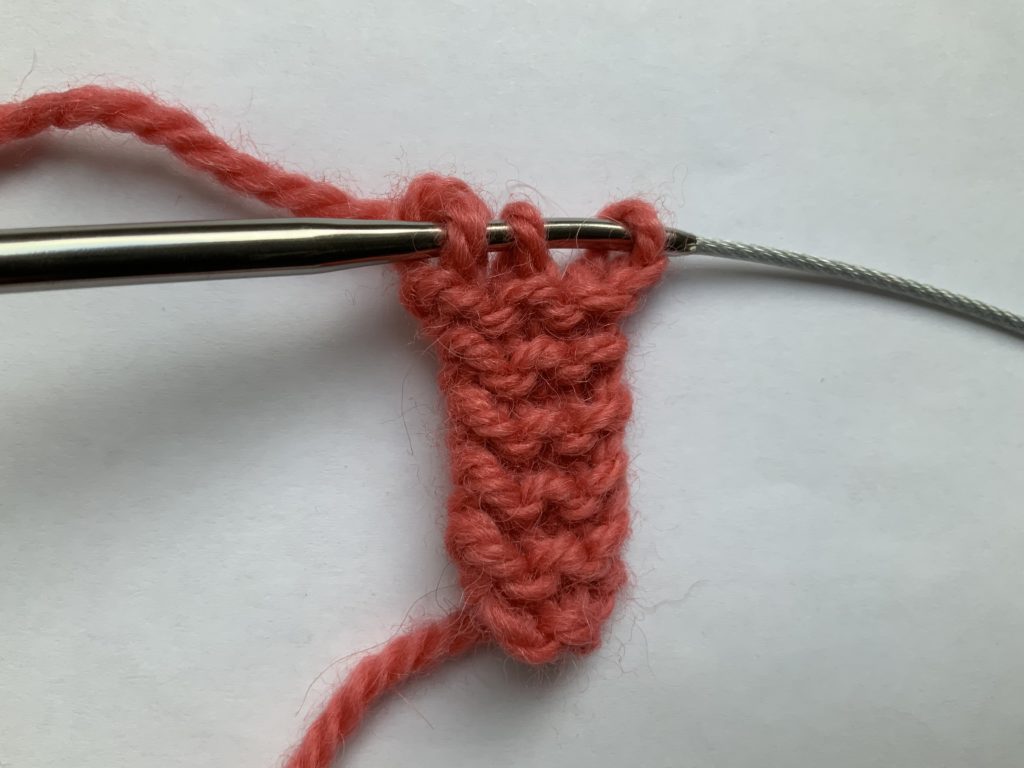
Now we want to pick up stitches from the left side of this little rectangle. At the end of the last row, we do not turn our work as we normally would. Instead, we rotate it by 90 degrees and pick up stitches.
Jetzt fassen wir Maschen aus der linken Seite dieses Rechtecks auf. Am Ende der letzten Reihe wenden wir die Arbeit nicht, sondern drehen sie um 90 Grad und fassen Maschen auf.
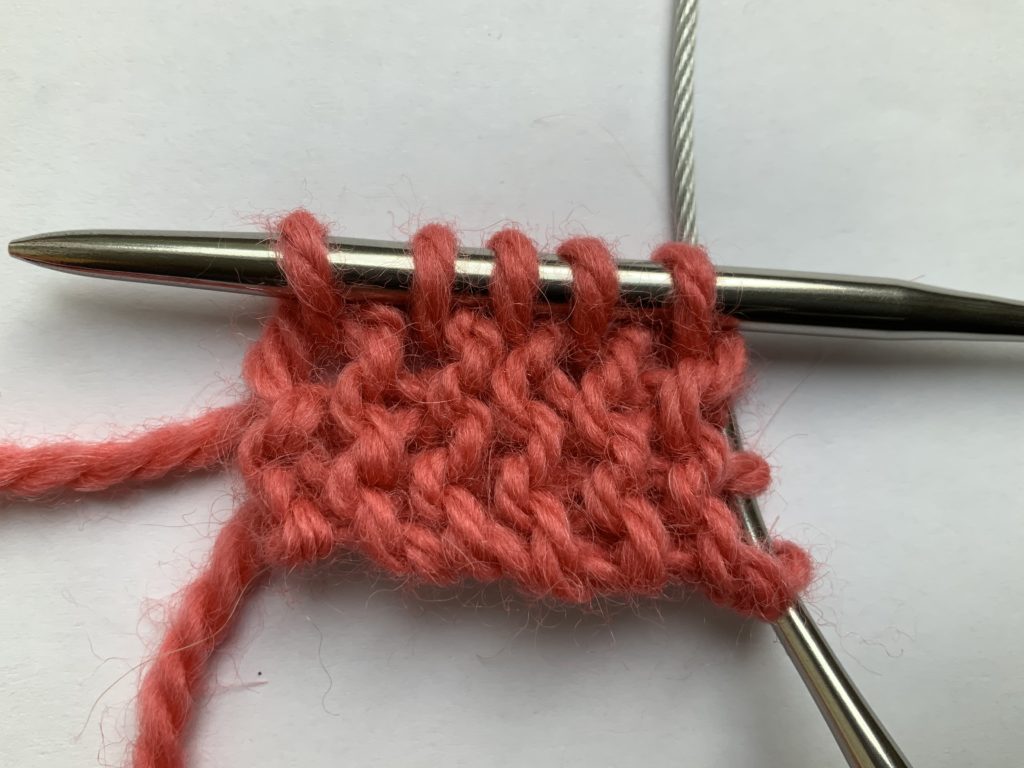
The last step is to pick up stitches from the cast on edge – as many as we have cast on. If you have cast on provisionally, undo that now and pick up the live stitches. If you haven’t, pick up stitches from the cast on edge.
Der letzte Schritt ist es, Maschen aus der Anschlagskante aufzufassen – genauso viele, wie wir angeschlagen haben. Wenn Du provisorisch angeschlagen hast, löse den Anschlag auf und fasse die Maschen auf. Wenn Du nicht provisorisch angeschlagen hast, fasse Maschen aus der Anschlagskante auf.
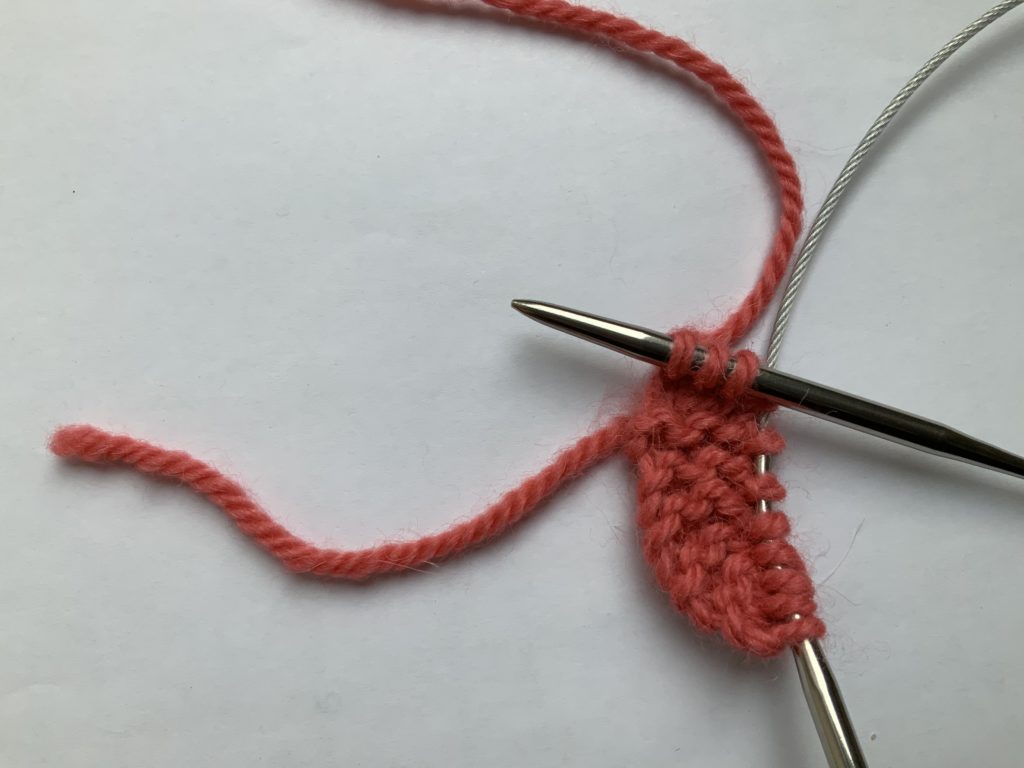
Tahdah – our garter tab is done and gives us a beautiful beginning to our shawl!
Tada – unser Garter Tab ist fertig und wir haben einen wunderschönen Anfang für unser Tuch!
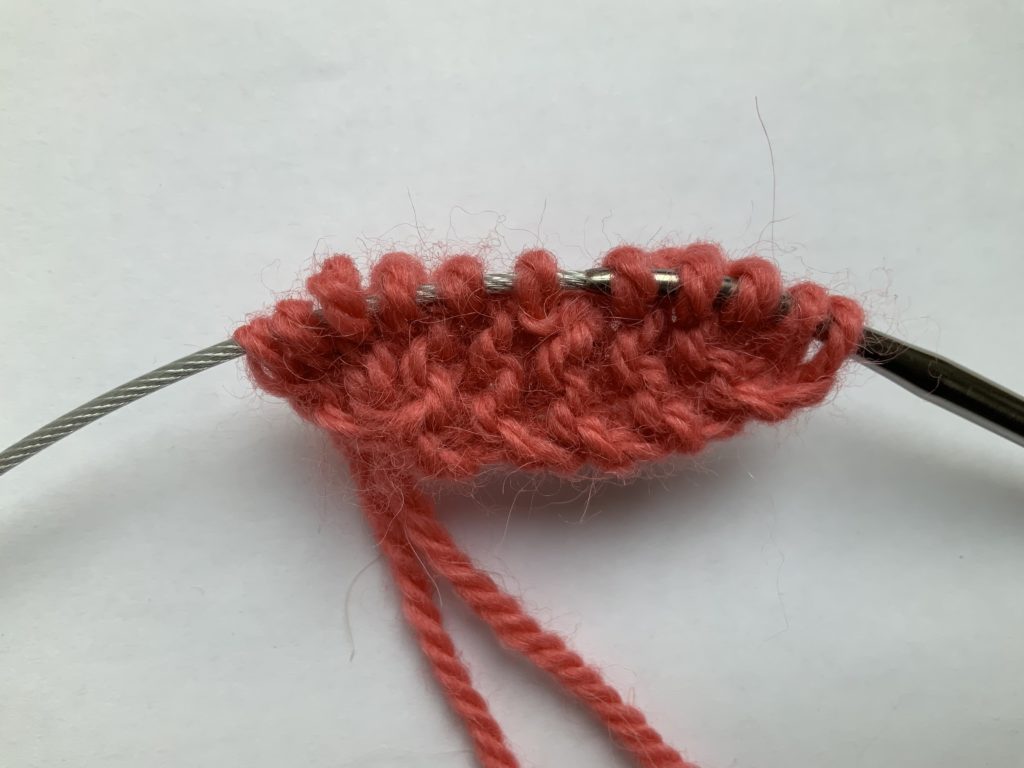
The garter edge flows seamlessly along the edge without a gap in the middle!
Der Kraus-Rechts-Rand ist nahtlos, ohne Lücke in der Mitte!

